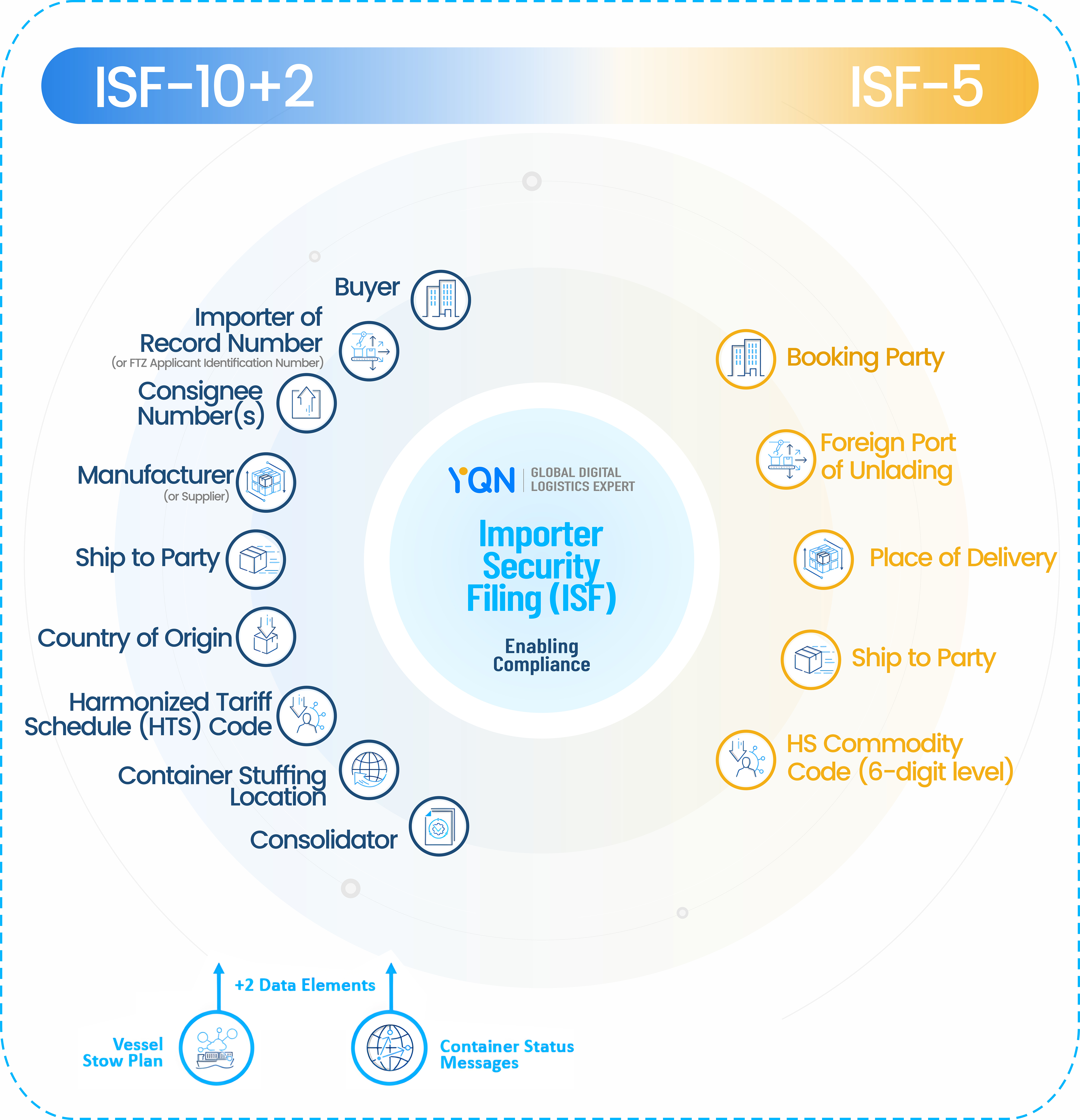ISF Form Fee Guide: Everything You Need to Know about ISF Cost
YQN Operation Team | Nov 14, 2024
Are you still worried about whether you can successfully clear U.S. Customs? Do you want to know how to avoid costly fines for exporting to America? YQN will help you understand the ISF filling, a crucial step in cross-border trade!
1. What is ISF Form Fee?
Importer Security Filing (ISF) is an important information filing process that U.S. Customs requires importers to provide before goods arrive in the United States. Its purpose is to protect the security of the U.S. supply chain and to ensure transparency and compliance of the shipment.
The ISF cost is considered a necessary expense during the import process to ensure that the shipment complies with U.S. Customs requirements.
2. How Much is ISF Fee?
The ISF form fee typically ranges from $25 to $50. At YQN Logistics, the fee is $35 for auto-filling. Actual fees may vary based on the service quality and complexity of the submission. Pay attention, usually ISF bond cost can be combined with ISF cost, and the total cost will between $80 and $120.
• Standard Fees: Usually cover document preparation and data entry.
• Additional Fees: Late submissions or incorrect data can lead to penalties, which can reach up to $5,000 for late filings.
3. How to Fill ISF Form?
Please fill the fields below with the following instructions:
| Fields | Instructions |
| 1. Seller | Full name and address, including zip code. |
| 2. Buyer | Full name and address, including zip code. |
| 3. Importer of Record Number | IRS, EIN, SSN, or other identifying ID. |
| 4. Consignee Number(s) | IRS, EIN, SSN, or other identifying ID. |
| 5. Manufacturer (or Supplier) | Name and address. |
| 6. Ship to Party | Name and address of the recipient. |
| 7. Country of Origin | Origin country of the goods. |
| 8. HTSUS Number | HS code for each commodity (6-10). |
| 9. Container Stuffing Location | Address provided by your freight forwarder. |
| 10. Consolidator Name and Address | LCL company name and address filled by your freight forwarder. |
4. ISF-10+2 VS ISF-5
There are two types of ISF: ISF 10+2 and ISF5. ISF5 is required when goods are shipped to a non-US port of discharge for temporary entry into the United States, while ISF10+2 is the document required when the final destination of the seaborne goods is the United States.

5. Money-Saving Tips for ISF Filling Charges
- Time Management:
Whether it is a direct vessel or a transshipment vessel, please ensure that the ISF form is submitted 48 hours before the final-arrival vessel arrives at the port of loading.
- ISF Bond:
Before sending the ISF it is important to ensure that the consignee has purchased an ISF Bond, which serves as a financial guarantee to ensure that specific data is provided to the U.S. Customs and Border Protection (CBP) in a timely and efficient manner before loading the goods onto the vessel.
- Digital Tools:
The information system can simplify the process of filling and submitting ISF forms and reduce human errors. YQN has an automated form recognition function, which can quickly and accurately help clients complete ISF filing and avoid unnecessary fines and surcharges.
6. ISF Form Fee Frequently Asked Questions (FAQs)
(1) What happens if I do not pay the ISF Form Fee on time?
Failure to pay or submit the ISF Form Fee on time may result in the shipment being detained and facing fines. In addition, the speed of customs clearance of goods may be affected, increasing logistics costs.
(2) Is the ISF Form required for all cargo imports?
No. The ISF filing is only applicable to goods entering the U.S. by ocean freight. For other modes of transportation (e.g., air, land, etc.), an ISF is not required.
(3) Is the ISF form fee negotiable or reducible?
The ISF form fee depends on the pricing strategy of the agent. Some companies may offer discounts based on long-term relationships or bulk shipments, so the price can be negotiated when selecting an agent.
7. Conclusion
ISF form fees play an important role in import compliance and supply chain security, and choosing the right agent and preparing your filings in advance is key to minimizing fees. By understanding ISF requirements and submitting information promptly, importers can not only avoid unnecessary expenses but also ensure that their goods enter the U.S. market on time and without incident.





